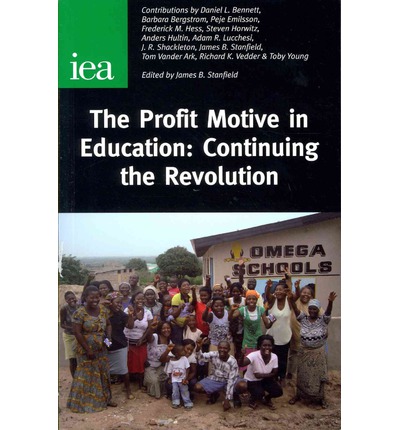Free School Reforms in Sweden Boost Quality, Innovation, and Choice
When the Swedish government introduced “free school reform” in 1992, the word “free” had four connotations according to Barbara Berstrom:
As an educator, you were free to start your own school, after meeting certain basic requirements set out by the National Schools Inspectorate. Secondly, as a parent and student, you were free to choose a school with the profile you preferred and not forced to attend a government school by the local officials. Thirdly, the school of choice was completely free of fees, and so there was no additional cost when choosing a school offered by a cooperative, a trust or a company. Finally, free schools have more freedom in pedagogical ideas and the daily running of the schoolincluding autonomy from municipal school boards.
Bergstrom got her start as a science teacher. In 1993 Bergstrom opened the Internationella Engelska Skolan (IES) with some donated furniture and strong convictions: students should learn English in a high expectations, tough love environment. IES is the largest free school network serving 13,000 students in 18 secondary schools in Sweden. In 2009 Mrs. Bergstrom received the ‘Entrepreneur of the Year in Sweden’ award.
 In a chapter in a recently released book exploring private enterprise in education (I also contributed a chapter), Bergstrom makes four critical observations about free school reform and private enterprise:
In a chapter in a recently released book exploring private enterprise in education (I also contributed a chapter), Bergstrom makes four critical observations about free school reform and private enterprise:
1. Convictions into reality. For most educational entrepreneurs, it’s not about becoming rich. “Instead, the driving force is something entirely different: freedom to create your own project and to transform your convictions into reality,” said Bergstrom.
2. Real change happens outside the system. “My dream was to create my very own school, in the shape and form in which I strongly believed. This would not have been possible if I had stayed in the state school system,” said Bergstrom. In fact, “a transformational change is close to impossible within the existing school system.”
3. Earning the right to work at scale. Bergstrom said, “Expansion would not happen without the right to make a profit. The reason for this is twofold: capability and incentive.” In comparison, “Many excellent schools managed by foundations and cooperatives in Sweden have not expanded.”
4. Parents as drivers. Bergstrom said that only with parent choice at the core of the system can you do something innovative–or just plain common sense.
Bergstrom is convinced that quality creates profits. “There is only one way to generate a profit–and that is providing quality education.” But she suggests thinking of it as profit-driven is too narrow:
“It is a complete misunderstanding of the market economy to describe it only as ‘profit-driven’. It is often forgotten that a crucial aspect of a ‘market’ is that it encourages experiments and makes it possible for people with ideas to put them into practice. The outcome will depend on the validity of the ideas and the competence of the people behind them. Without the freedom of the market, however, many excellent ideas and dreams will no reach the testing stage and companies like IES would not exist.”
How do you create demand? Bergman said it all comes down to having an excellent reputation. She said, “Everything starts with quality.” And that starts with recruiting good people according to Bergman.
In addition to promoting quality and choice, the Swedish free school reform has made possible innovative networks like Kunskapsskolan (Knowledge School) formed by advertising executive Peje Emilsson in 1999. Kunskapsskolan is a personalized and competency-based model.
When a twelve-year old child enrolls at one of our schools, we invest time and resources to help tailor the curriculum and learning environment to meet his or her particular needs and ambitions,” said Peje. “Each student has a dedicated coach and together with their teachers and parents they set short- and long-term goals. Strategies are then developed for reaching the goals, performance is assessed and strategies adjusted accordingly.”
The 21 schools in the Kunskapsskolan are typically graded as the best school in each city. Gov. Jeb Bush was so impressed with the Knowledge School he visited, he discusses it in most of his education speeches. Joel Klein liked the model so much, he made room for one on ground floor of the New York City Department of Education.
Since the law was introduced, independent school enrollment has risen from 1 percent to 23 percent and nearly half of all students in urban areas. More than 60 percent of the independent schools are run as for-profit companies.
“There can be no doubt that the independent schools have given taxpayers greater value for he money spent on education,” Emilsson said. “This is true both in their own capacity — on average, they have better quality and results — and as catalysts of improvement in the state schools they challenge.”
James Standfield, Newcastle University and editor of the volume, draws several conclusions from these and other examples: that there is no conflict between the profit motive and education, that freedom in education is the key ingredient, and that there is no one, best model of a school.
The Institute of Economic Affairs (IEA) also released today “The Profit Motive in Education: Continuing the Revolution,” a free, downloadable summary about education reforms at risk without for-profit, free schools.
This blog first appeared on EdWeek.







0 Comments
Leave a Comment
Your email address will not be published. All fields are required.